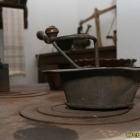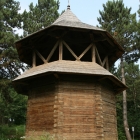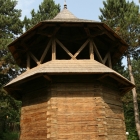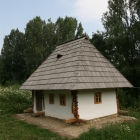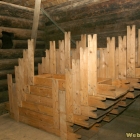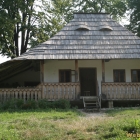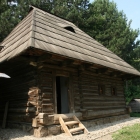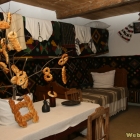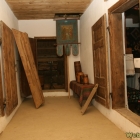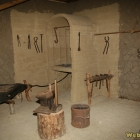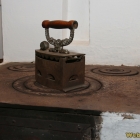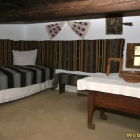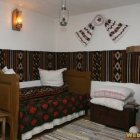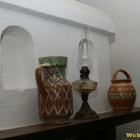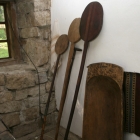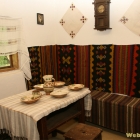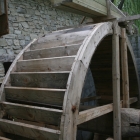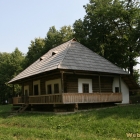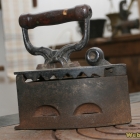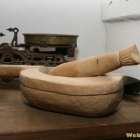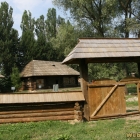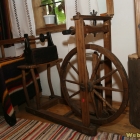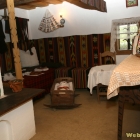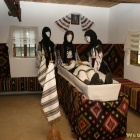Traditional village in Bukovina. Crafted objects, folklore and customs at the Village Museum Suceava
Found near the fortress of king Stephen The Great, the Village Museum of Suceava holds a remarkable patrimony of vestiges of Moldavian peasant lifestyle from the area of Bukovina. On the alleys of this village museum you can stroll as if you were in a place untouched by modern technology, with wooden houses that have in their center a church entirely made of wood. You can also see workshops, water mills, a blacksmith, tools for making wine and ceramics workshops. In some of the houses you can see not only folkloric costumes and furniture, but illustrations of various customs for christening, burial or Christmas.
Bucovina (Bukovina) is a place where folkloric Romanian tradition has kept its freshness. Even the air of this mountain land is pure and fresh as it is very rich in forests. The region kept the imprint of the Austro-hungarian civilization after being a part of the Habsbourgic Empire from 1775. Geographically, Bucovina stretches from Vatra Dornei, Campulung, Gura Humorului to Suceava, Radauti, up to Cernauti, which is today part of Ukraine.
A typycal house in Bukovina had two rooms and an entry-room, the objects inside constitute now an etnographoc treasure. Houses used to be built of mud bricks or wood, due to the local resources. The walls were embelished with textile materials with folkloric motives.
These fabrics that covered the bed, as well as the clothes that were dressed by men and women were weaved in house. The wood thread was purred and used for weaving with zoomorphic, antropomorphic, geometric and floral motives.
In a typycal blacksmith, horses and oxes were shoed, but also other tools were made – nippers, axes, knives. The fire was kept alive with large bellows, and the red iron was hammered on an anvil.
Pottery is one of the oldest draftsmanships, as neolithical vassels prove it. The mud used was of great importance; workers knew where to find the best one. It was then dithered by heands and feet and mixed with water untill a paste was obtained, which was to be used in the crockery wheel, moved by foot through a pedal.
By hand modelling, the desired shape was obtained. After the vassel was ready, it was covered with a white or red paste of loam dilluted with water to cover any deffect or pore due to the impurity of the material.
Vassels and ewers are painted and double baked in a special oven. Decorating the ceramic vassels is also made by scratching some drawings.
Carpentry and joynery are two other traditional occupations met everywhere in Romanian villages. From wood were created objects for house use, like roll pins, spoons, grinders, chairs, cradles and even entire houses, doors, gates and windows.
Every important moment in life was ritualized to be made part of a mysycal vision of the world. For funerals, for instance, are weaved fabrics called “bridges” that are layed on the ground on every intersection and entrencies over which the coffin will be carried. Pretzels are given away as an offering for the soul of the deceased and handkerchiefs with a coin in one corner.
From an apple brach, an immaginary tree was created to symbolize the Tree of Life from the garden on Eden, the from which Adam and Eve never riched. This tree is decorated with pretzels and fruits. Even in the hands of the dead man are put baked sweets for the relatives and friends that he would meet in the after world.
On the contrary, the birth of a child was a moment of joy for the entire village that took part at the baptism. A red weave was tied on child’s hand to defend him from the evil eye, while in the baving water were put coins, basil and other flowers to make him healthy and loved by everyone.
Hunting brought the first food resources to the villagers from Bucovina and is still practiced, but only for recreation, since the forrests around continue to house Carpathian stags. In the rivers and special farms can be caught trouts and other fishes.
The local cuisine is made up of numerous delicious meals with chicken or cow meat, cream, mushrooms. At such a rich table, an excellent wine could not miss; in Bukovina there are several vineyards, at Cotnari, Nicoresti and Husi, with underground chambers that are used for keeping wine bottles since the time of Stephan the Great.
Mai multe despre: Architecture, Romania • Bucovina • Bukovina • crafted objects • folklore • Moldova • peasants • Romania • rustic • Suceava • village museum- Home Page
start page - Architecture
landmark buildings - Sacred architecture
places of worship - Nature
landscape photography - Concert
performing artists - Christmas
Santa Claus pictures
- Jooble
jobs for photographers - Escape
an out of control blog - Merry Christmas
The best organizer of Christmas parties - Astro photo
Eclipse hunting and astrological photography

